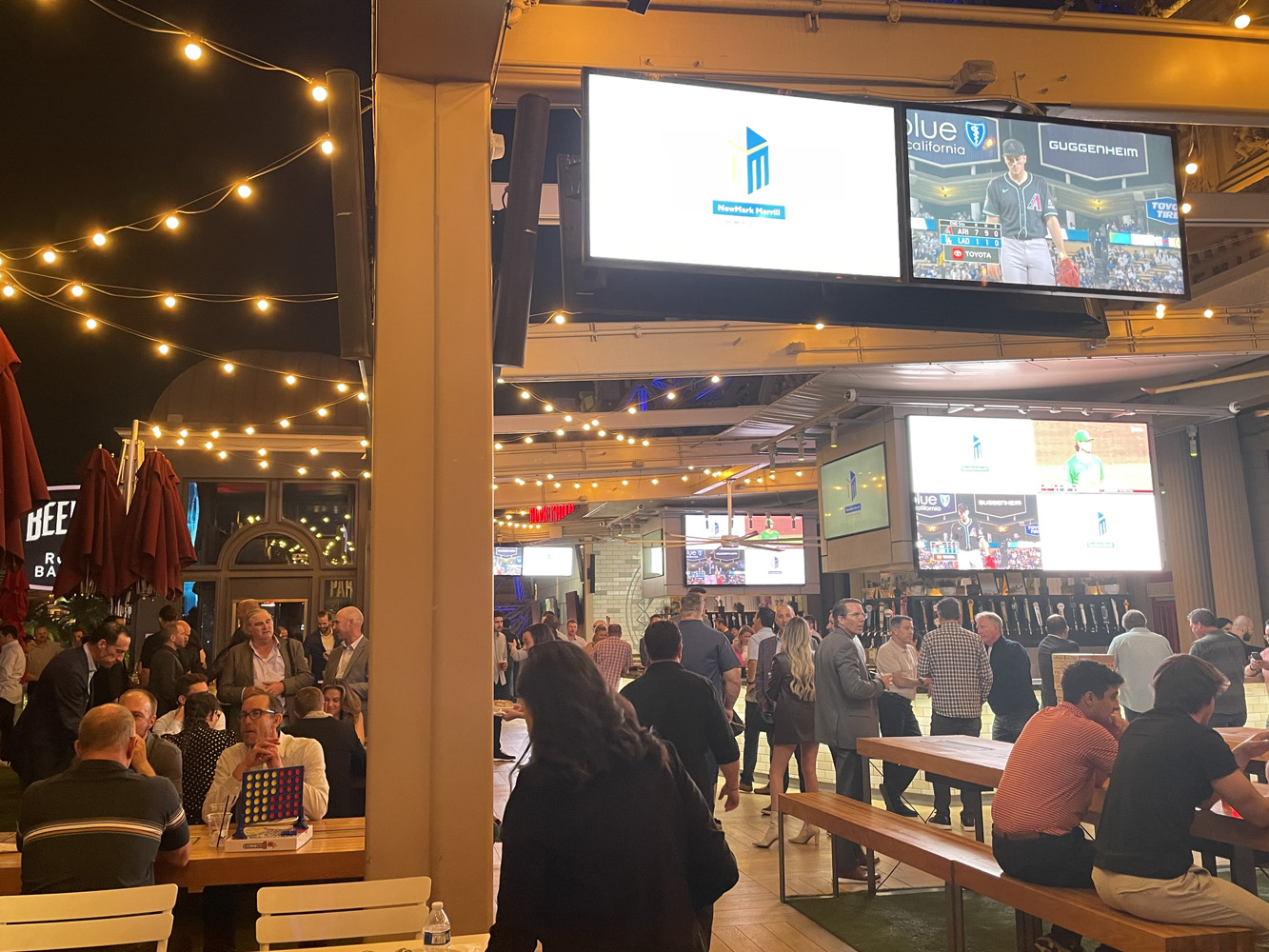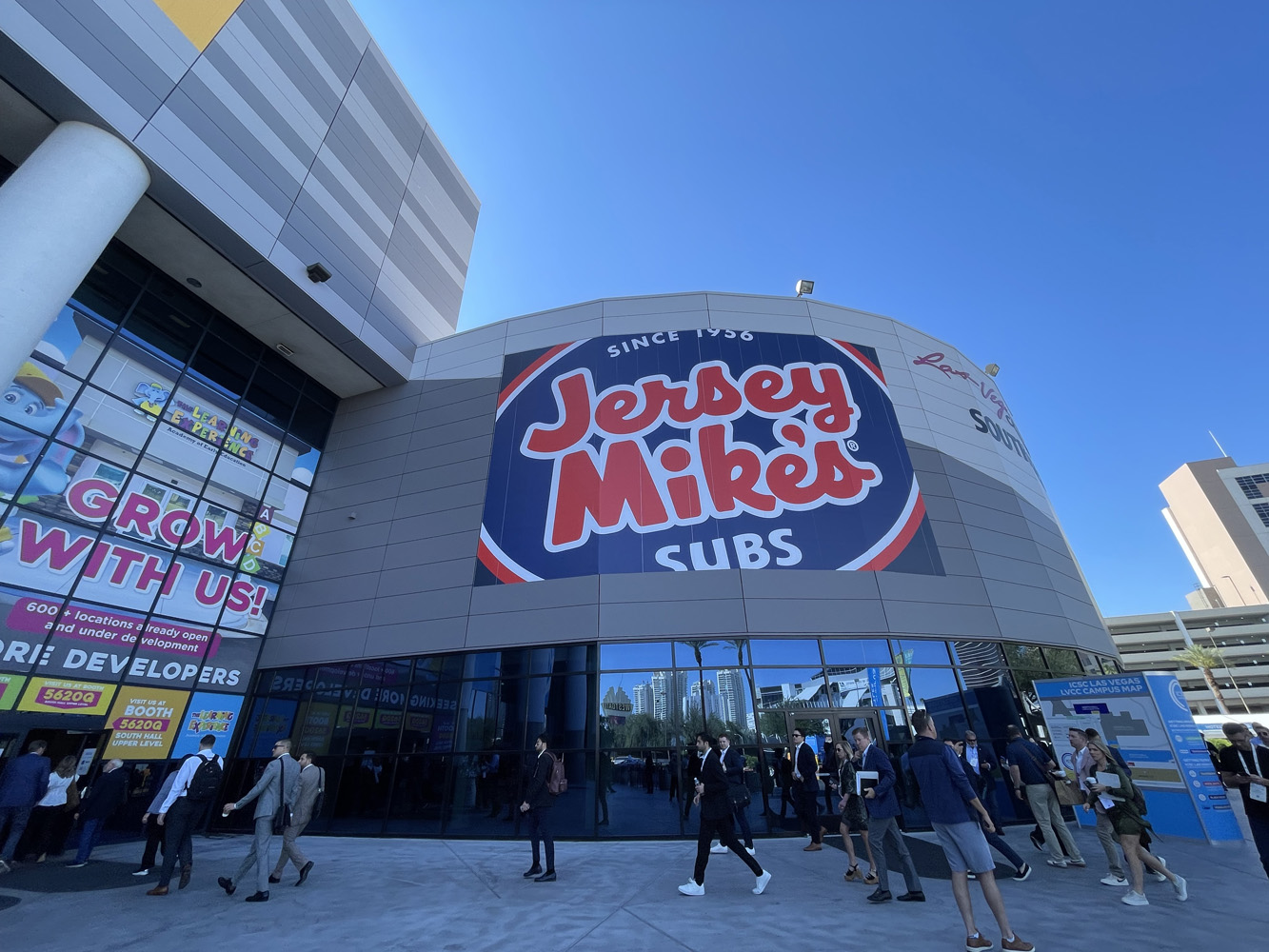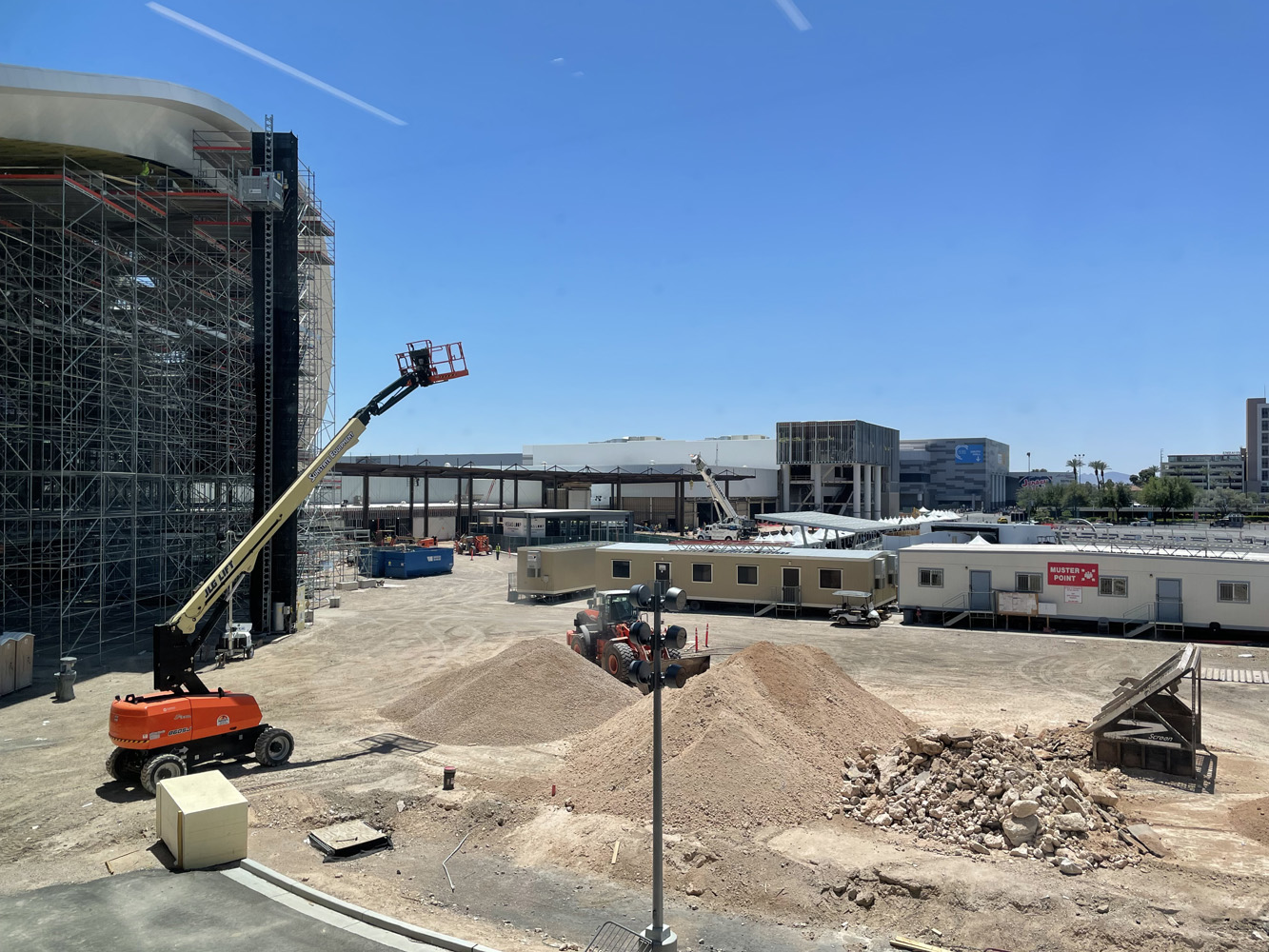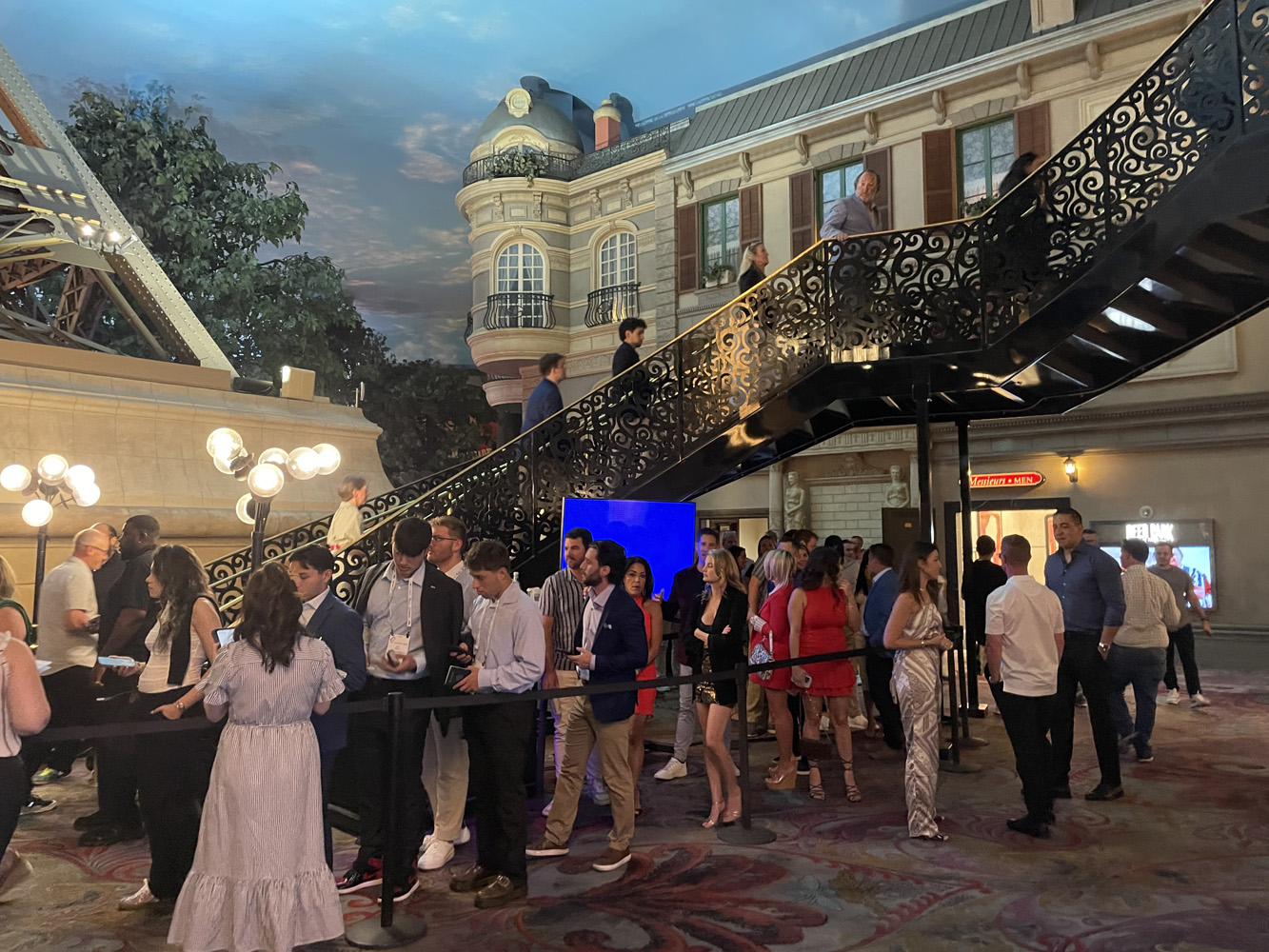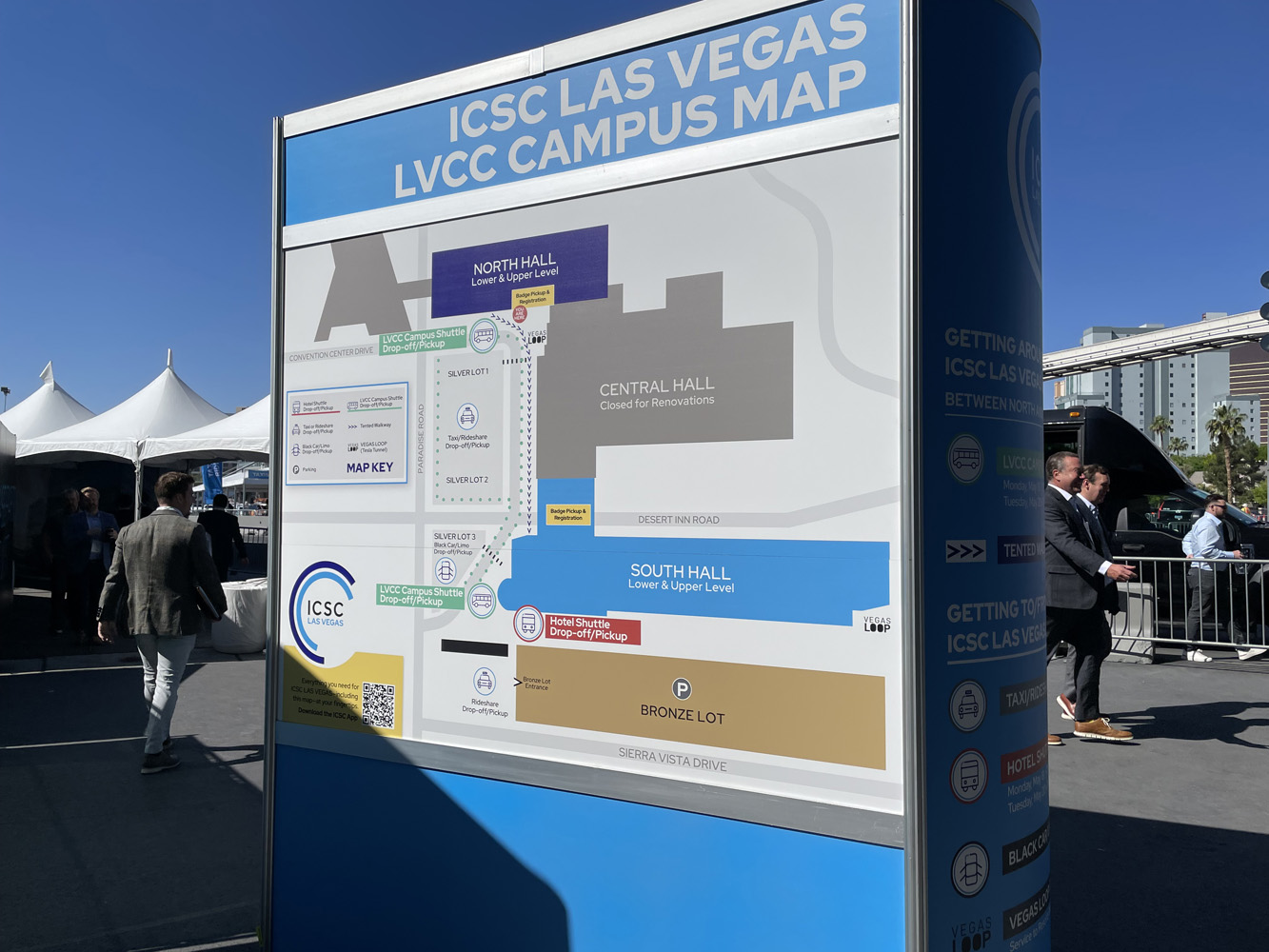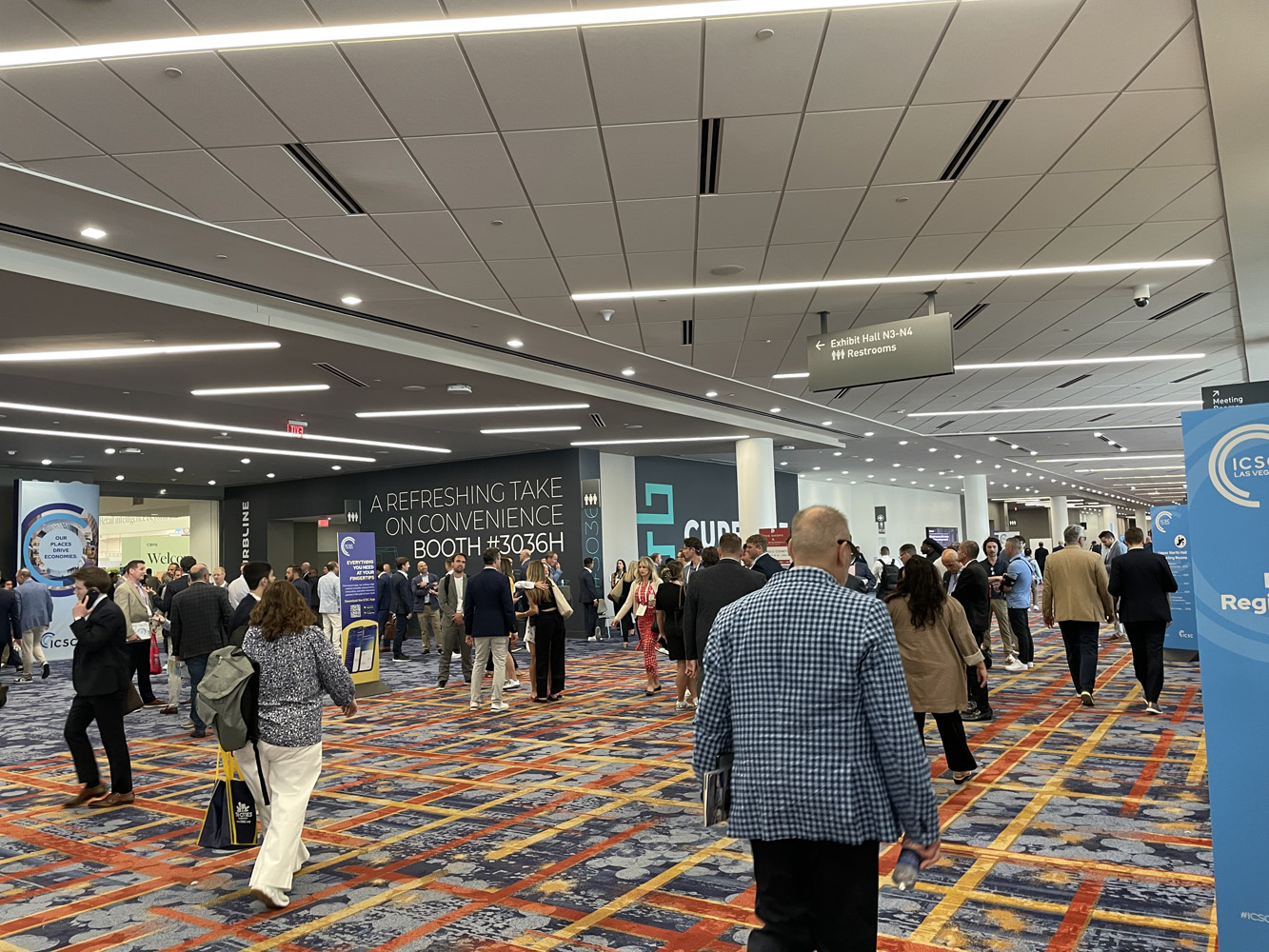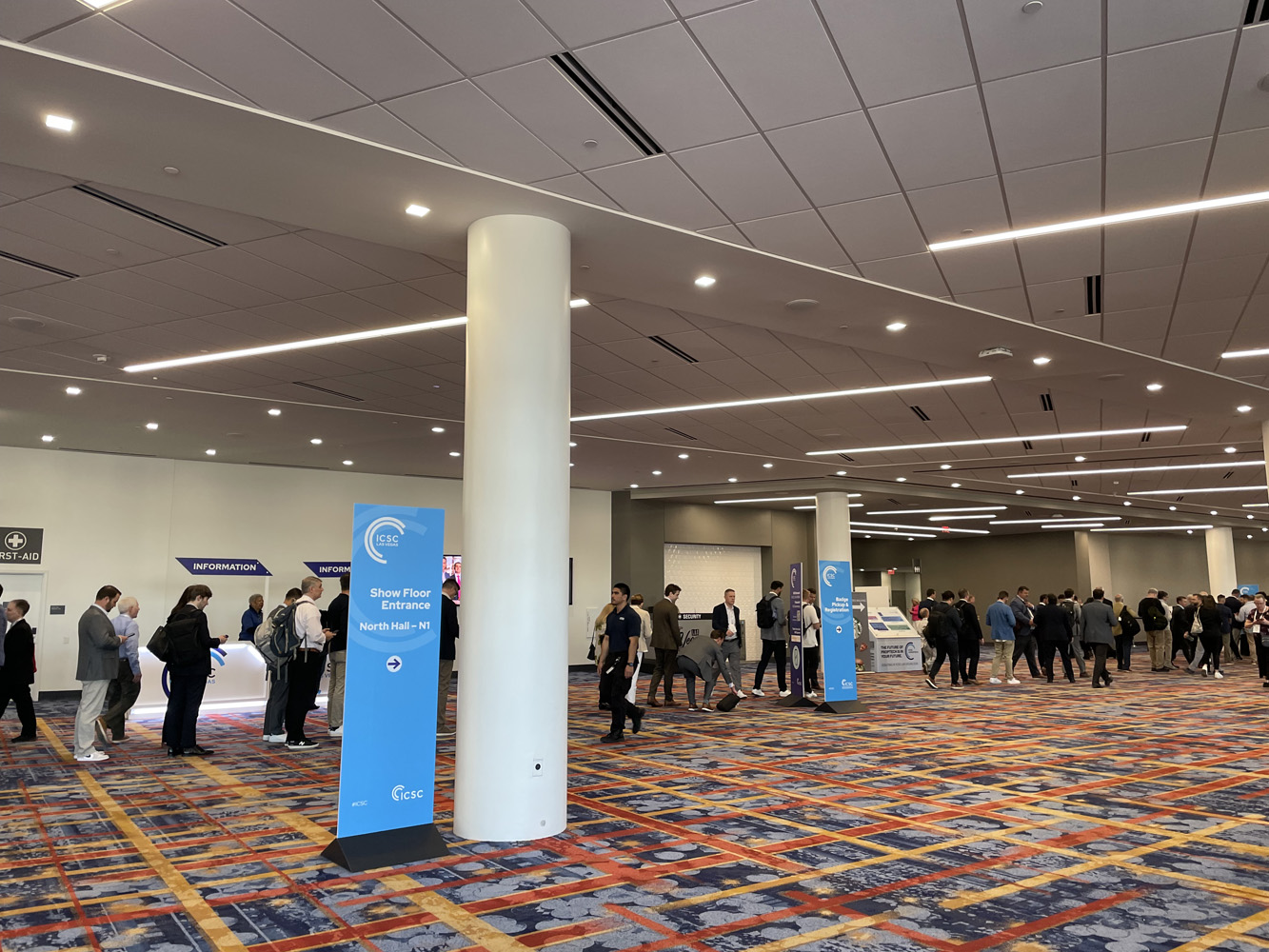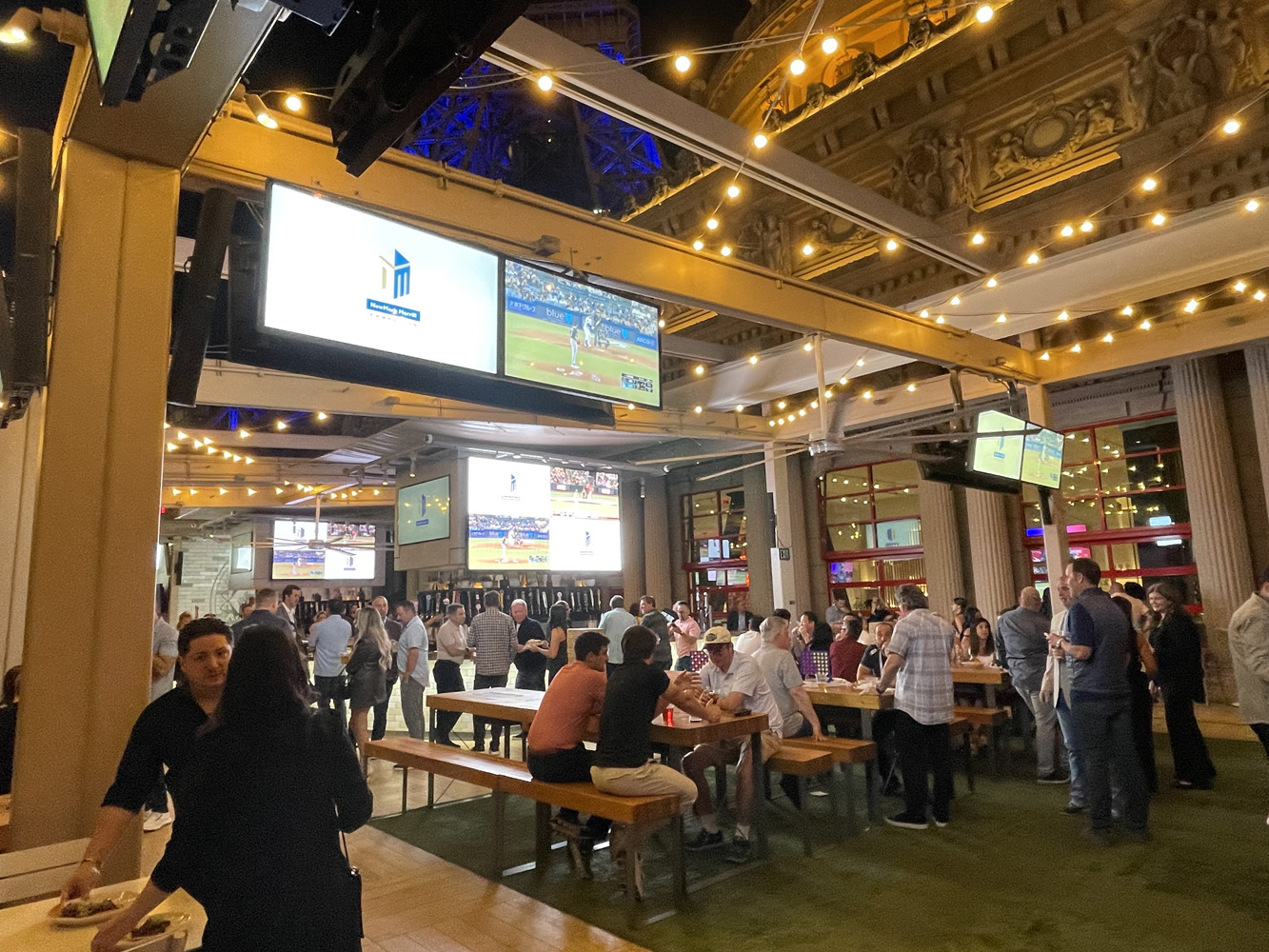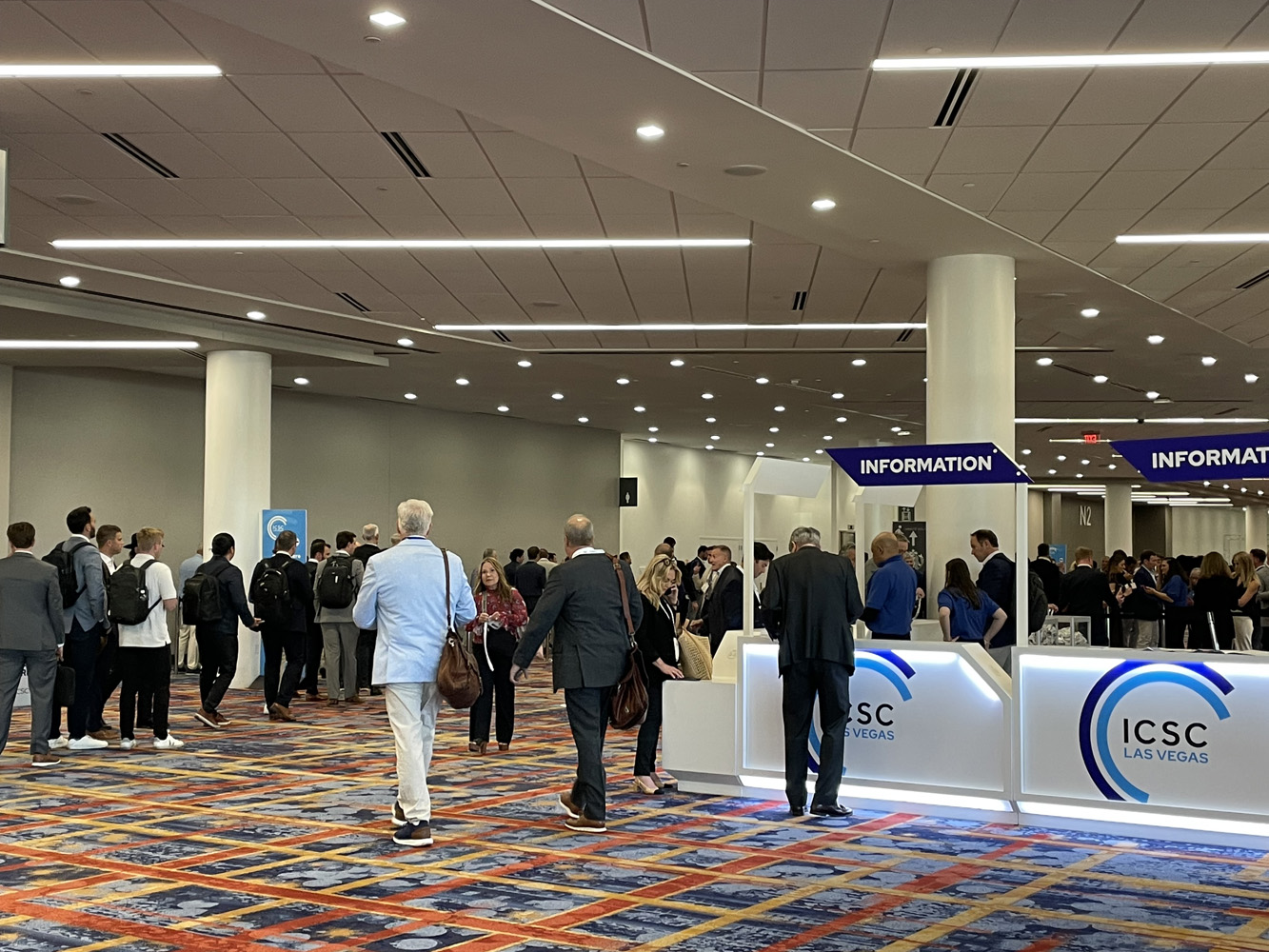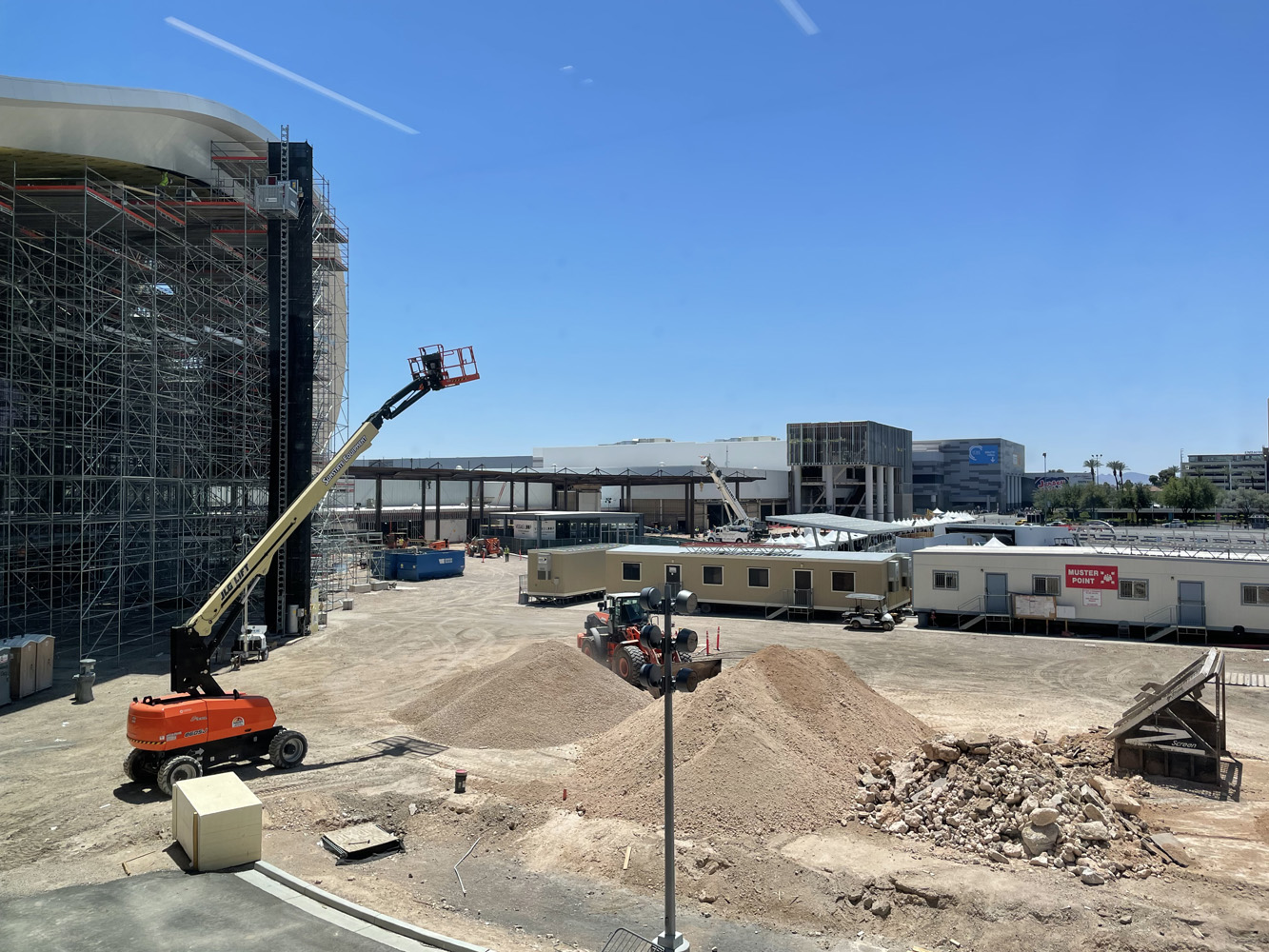“Parties tell you the story,” said NewMark Merrill Companies founder and CEO Sandy Sigal as he held court at his event Monday night on the Las Vegas Strip. “Forget all the statistics and everything else. People are out to have fun and loosen up because it was a stressful year last year, and this year is stressful.”
Sigal shook a steady stream of hands as he greeted guests at NewMark Merrill’s “Light Up the Night” party. About 600 RSVP’d to attend the Beer Park event at the Paris hotel, a far cry from NewMark Merrill’s start years ago with about 200 people in one of the property’s suites.
The free flowing alcohol, ceviche and pretzel bites were a welcome reprieve from a day of meetings at the Las Vegas Convention Center and across the Strip during the International Council of Shopping Centers’ annual confab. The conference drew over 24,000 people last year and some reports suggest the crowd exceeded 30,000 this year. Steps from NewMark Merrill’s party, a line for Colliers’ event at Chéri Rooftop snaked around the casino. New York Developers went for the pool party vibe with its annual party at the Fontainebleau’s LIV Beach.
The industry sobered up Tuesday for ICSC’s third and final day as it went back to facing the torrent of headwinds that will force the industry to get creative about business.
“You’ve got inflation, worry about interest rates,” Sigal said. “You have tariffs that are a mini Covid. When will it start? When will it end? How bad will it be? And then, on top of that, you’re from L.A., so the fires.”
Sales pitch?
While Sigal was candid about the industry’s headwinds, others clung to the safety in statistics.
For Nick Wirick of SRS Real Estate Partners, that meant pointing out Southern California’s vacancy rate. While up slightly this year it’s still “very, very healthy” at 6 percent, he said.
“The challenge with the consumer and trying to figure out what they’re going to do spending-wise is, ‘Watch what I do; don’t listen to what I say.’ Because, sentiment has been down drastically, but then [consumers] are still spending,” said Avison Young head of retail intelligence Meghann Martindale.
Martindale expects spending to soften through the summer, but part of that will be due to a shift of dollars to summer vacations.
On the acquisitions front, JLL’s Boston office co-head Chris Angelone said his firm’s retail team has been tracking activity since the tariffs were announced. Some buyers contemplated hitting pause or sought a modest price reduction and additional time in cases of deals in contract.
“That went on for about two weeks and since then it really has been business as usual,” Angelone said. “We’re seeing the pace of activity that we saw pre-announcement of the tariffs. We’re right there back to that level of velocity again.”
Still, it’s not a cakewalk.
“We are finding it’s a little harder to get deals done,” said Primestor Development COO Allison Lynch. “The length of time [is longer]. People are being very data driven and analyzing their deals. They’re very, very thoughtful.”
Anchor vs. no anchor
If the Vegas parties offered one read on the industry, while advertising at the trade show provided another.
Curbline Properties’ wall wrap in the North Hall offered a visual reminder of the Site Centers spinoff. Curbline, became a separate, publicly-traded real estate investment trust in September to focus on neighborhood centers, minus the big-box space.
“There’s so much more demand today than there was five years ago in unanchored retail strip [centers],” said Hanley Investment Group Garrett Wood.
He pointed to centers in the 5,000- to 15,000-square-foot range with a mix of credit tenants and mom-and-pop concepts.
“I think Covid really brought out the importance of those neighborhood retail strip centers because [of] the tenants that are in them,” Wood said. “We’ve seen cap rates compress in the newer, Class A unanchored retail centers.”
While unanchored strip was the talk of ICSC, Northmarq Capital managing director Bryan Ley said he’s also seen increased investor appetite in lifestyle centers.
In the years just before the pandemic, there was a ramp in lifestyle center development and then that subsided, he said. Now, the category is bouncing back and folding in office, hotels and other uses.
“It’s making these really powerful mixed-use properties and the new town centers in some of these suburbs,” Ley said.
Placemaking is key, but adds an element of uncertainty when smaller mom-and-pops enter the conversation. Investors sometimes associate those tenants with more risk.
“Ten years ago, we always used to say it was credit versus cool,” Martindale said. “Do you go with the credit, super stable, national, big chain? Or, on the properties that you want to differentiate, you need that cool factor. What’s hard now is just capitalizing those [non-credit tenant] deals because they’re not necessarily less expensive to build out.”
There’s a certain comfort in the big box. That’s why Phoenix shopping owner developer and manager Vestar’s not shifting its strategy.
“We believe in traffic drivers,” said finance and development vice president Kean Thomas. “We believe in the cohesiveness of a large center. We also have a significant management portfolio and it’s very challenging to manage things that are chopped up.
“So much of retail is having boots on the ground, understanding what’s going on, curating the property and getting to know your tenants. That’s really hard when you’ve got one [center] here, one here, one a five-minute drive, one a 20-minute drive. And, by the way, they’re all only paying a relatively small fee, so it’s not our space.”
Nothing shocking
All that said, the past seven years have rocked properties with big-box tenants that have gone bankrupt or shrunk their footprint.
Vestar itself has had to pivot with Party City stores, scooping up new tenants to fill the spaces left by the chain’s bankruptcy late last year. The shopping center owner sees the shedding as a way to bring in tenants with healthier financials that pay market rents.
Many property owners, like Thomas, see similar upside in the recent wave of Chapter 11s from Party City, Big Lots, Forever 21, Joann and Rite Aid.
“While Forever 21 had a lot of square footage, they didn’t pay a lot of rent,” Macerich senior vice president of leasing Doug Healey told analysts last week during the mall REITs quarterly conference call.
Healey said Macerich has commitments with retailers on over 50 percent of Forever 21’s former space, which will generate more than what Forever 21 had been paying in rent. Another 10 percent of the chain’s former footprint have letters of intent signed, Healey said.
“There’s some generational opportunities out there with some of the bankruptcies that have occurred and we’re also seeing a fair amount of tenants that have been opportunistic, taking big swaths of these boxes,” SRS’s Wirick said.
Crexi has had traction selling through its auction platform vacant Sears and Big Lots stores. It’s sold 25 vacant big boxes in the past year as regional developers snap up the space with tenants ready to move in.
“My experience with retail, hate to say this — one concept kind of gets older and goes away, there’s usually some sort of new concept that comes along,” Crexi senior managing director Bob Drury said.
“The bankruptcies, none of them were a surprise to us,” Primestor’s Lynch said. “They’re retailers we’ve been tracking.”
For Primestor, the impact was on space previously occupied by Rite Aid. Like Macerich, the company already knew what to do and now has two tenants lined up to fill those spaces.
“Twenty years ago, we used to be able to say, ‘This tenant is going to take 200 stores from this brand that’s closing stores,’ and that’s just not the case anymore,” Martindale said.
The industry knows how to roll with the punches, Martindale offered. And, if the default of resilience doesn’t work, there’s always a good party to lean on as NewMark Merrill’s Sigal offered his thoughts on where the industry and his party Monday night were headed.
“I mean, we started the party with beer because we started early,” the CEO said. “I think it’s going to go more towards gin and I see good possibilities at the end of the party for tequila.”
Read more




